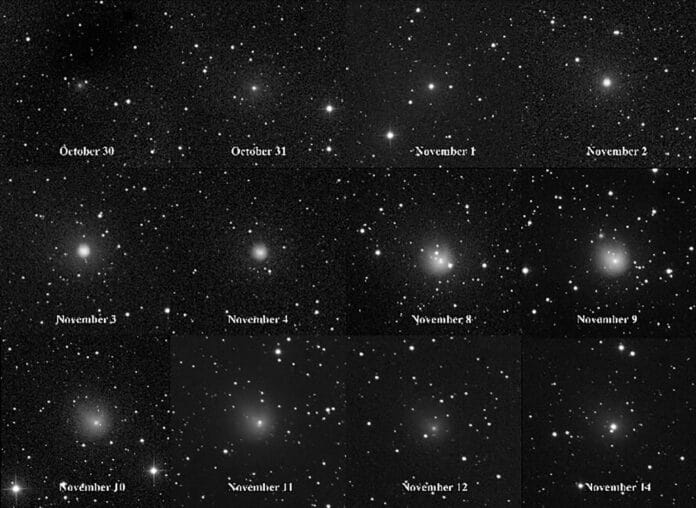Retired biology professor and now-amateur astronomer Eliot Herman captured on November 14 a cryovolcanic comet 12P/Pons-Brooks to be experiencing its biggest outburst. It was found to be brightening more than 100-fold to magnitude +9.3.
This comet has now produced four significant eruptions in 2023: on July 20, on October 5, on November 1, and now on November 14. This pattern suggests that the comet will be active more frequently.
The instability of Comet 12P/Pons-Brooks has long been known to astronomers. Every 71 years, it visits the inner solar system. There have been at least seven notable outbreaks since the 19th century. 2023 is expected to surpass that figure in just one year.
The comet is believed to be one of 10 to 20 known comets with active ice volcanoes. The “magma” is a cold mixture of dissolved gases and liquid hydrocarbons that is cold and trapped beneath a wax-like surface. When sunlight creates a crack, these volatiles that have been pent up could burst.
Due to two horns that resembled the head of Satan that emerged during three previous outbursts, this comet has been referred to as the “devil comet” in news reports. It could be different this time.
Nick James, Director of the Comet Section of the British Astronomical Association, who took this picture on November 15 said, “There is no sign of any dark lane in the coma. The [comet’s atmosphere] seems perfectly circular this time.”
